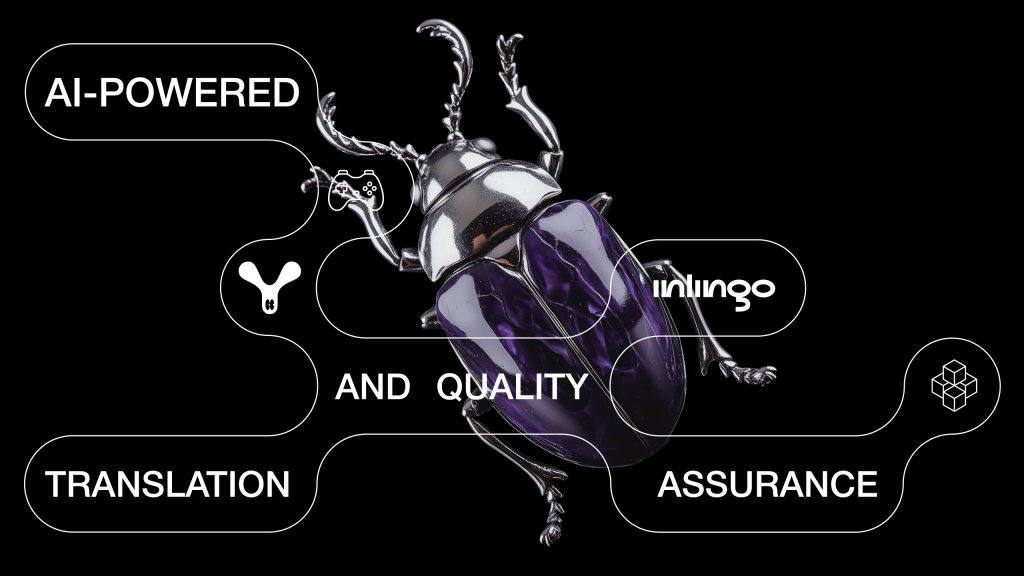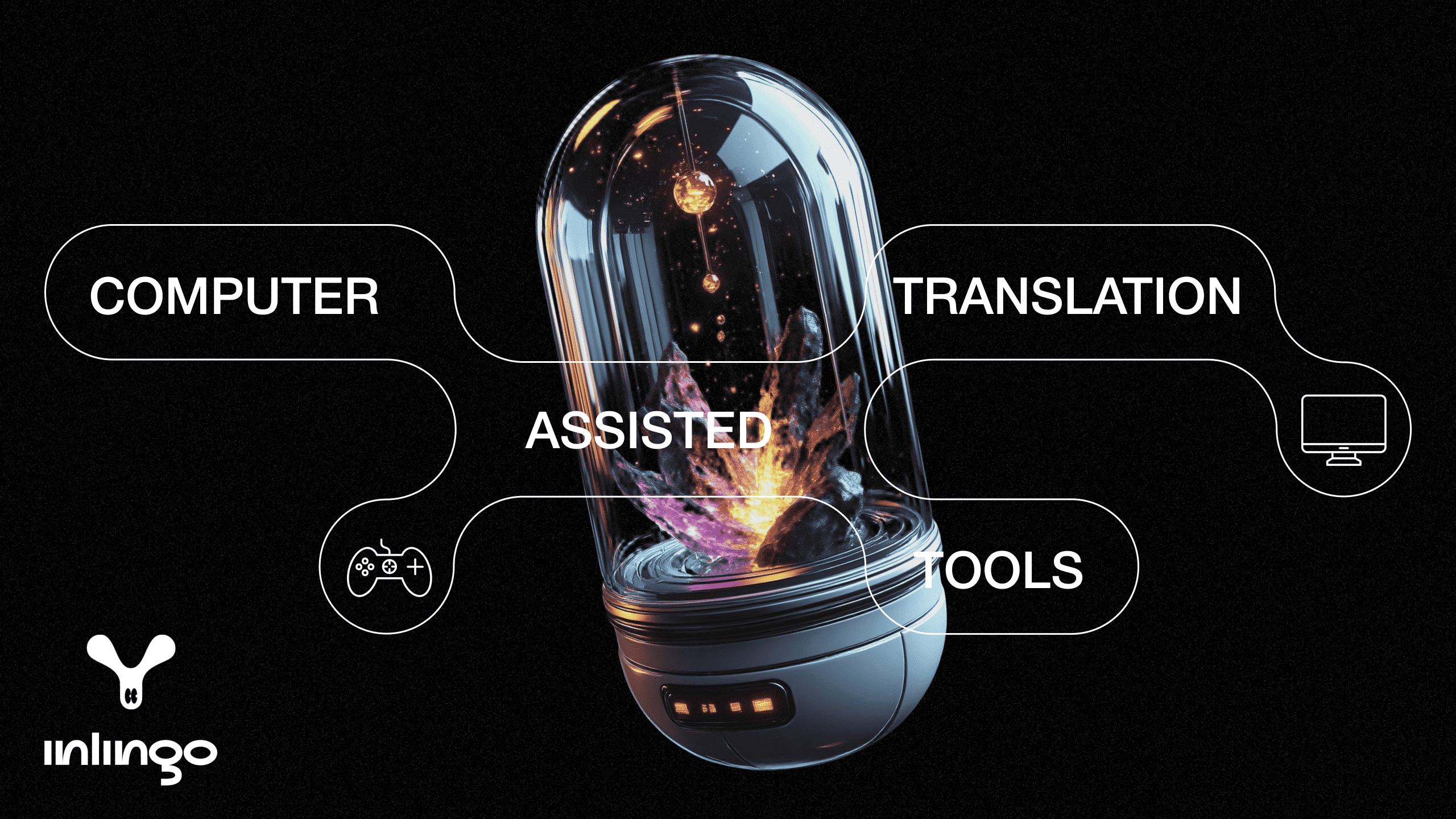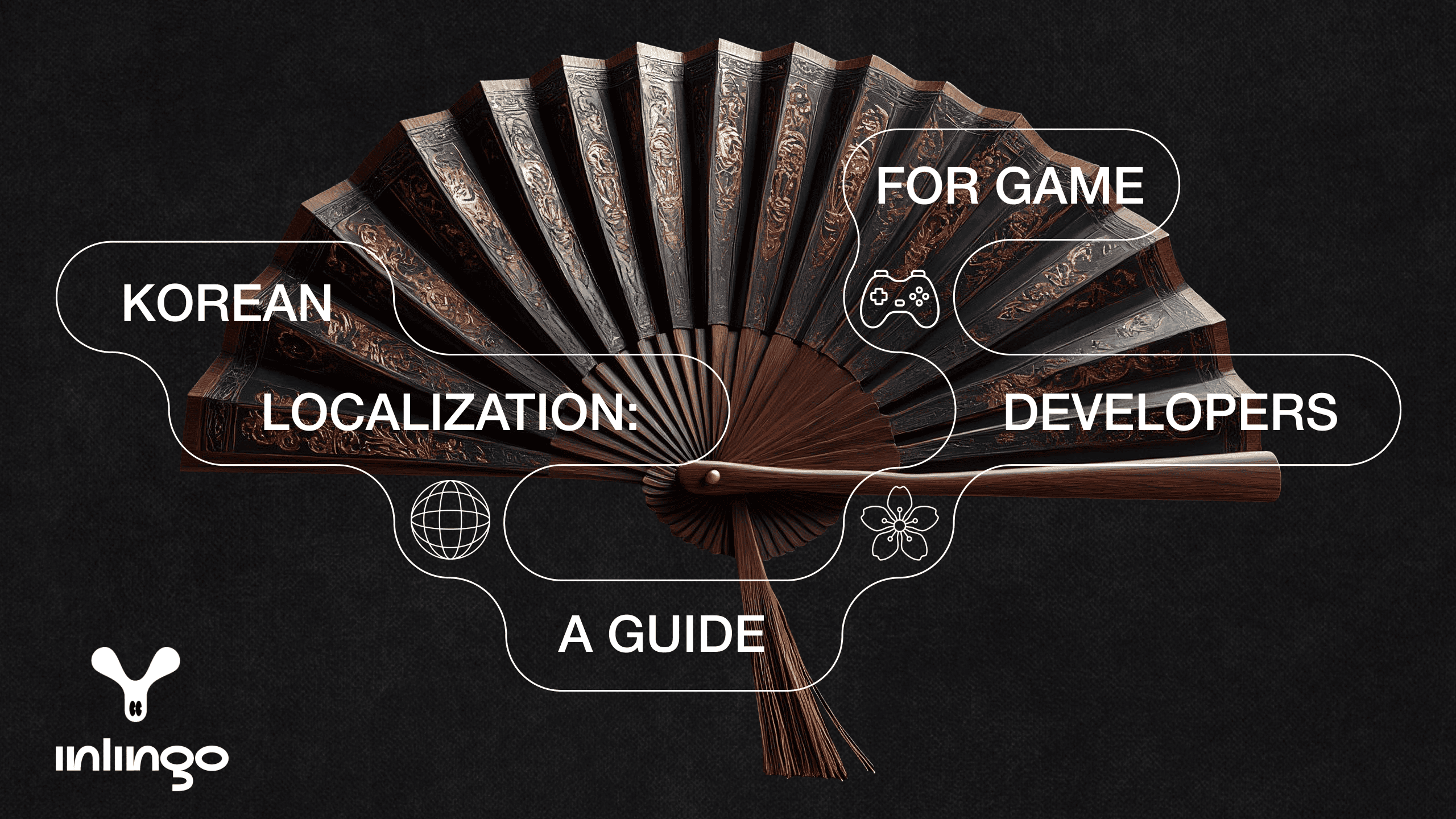Game studios and publishers today face a choice: translate content manually or harness the power of neural networks and machine translation. Human translation by native speakers delivers the highest quality, but it comes at a cost, both in terms of time and budget. Machine translation, on the other hand, is fast and affordable, but the results don’t always hit the mark.
At INLINGO, we offer a smarter alternative: AI-Powered Translation and Quality Assurance—an enhanced machine translation workflow backed by expert oversight. In this article, we’ll break down how it works and how we deliver this next-gen service.
What Is AI-Powered Translation & Quality Assurance—and How Does It Work?
AI + QA is machine translation, upgraded. It’s the perfect solution for projects that don’t require full human editing but still need a polished, ready-to-use result. The process brings together:
-
- Top-tier MT/AI engines like DeepL, Google Translate, and ChatGPT;
- Translation memory, glossaries, and your project’s style guide;
- Automated quality control systems;
- And most importantly, a team of skilled linguists who review and refine the output by hand, fixing anything the AI missed.
In a nutshell, AI does the heavy lifting while linguists fine-tune the rest. The machine handles most of the translation work, while linguists step in only where the AI stumbles, that is, when it misses context, mistranslates terms, mishandles variables, or gets the tone and style wrong.
Example:
Source text (French): “Obtenez votre récompense quotidienne et améliorez votre personnage !”
Raw machine translation (e.g., from DeepL or Google Translate): “Get your daily reward and improve your character!”
That seems fine at first glance, but let’s dig deeper into the nuances:
- Sure, récompense often translates as reward, but project guidelines might call for a different term like loot or bonus.
- The phrase “improve your character” can feel clunky. In gaming contexts, it’s far more natural to say “level up your character,” “upgrade,” or “boost your character.”
After AI + QA (incorporating project-specific terminology, linguistic review, and natural phrasing), the final version might look like: “Claim your daily bonus and boost your character!”
AI tools are powerful, but they’re not foolproof. Publishing raw machine output can be risky, as the result may be riddled with mistakes. That’s where human expertise comes in. A person with experience and contextual insight can refine the text to sound more natural than standard machine-generated output. A linguist ensures clarity, corrects errors, and tailors the message to feel authentic.
With AI + QA, linguists don’t have to rewrite the entire text from scratch like they do with traditional post-editing of machine translation. Instead, they tweak only what truly needs attention, saving both time and budget.
How Our AI + QA Process Works
At INLINGO, this workflow has been streamlined into four stages.
1. Preparation
We dive deep into the source content to determine:
- What context should be added to help the machine translation engine deliver better results;
- Which segments need special attention, such as marketing taglines or strings with variables;
- Which glossaries and automated QA rules should be applied.
At this stage, we also develop key support materials that guide the entire process, including glossaries, style guides, and linguist notes.
2. Translation
Armed with all the prep work, we run the content through a machine translation engine. This gives us a draft version—quick and cost-effective—but it may include technical or contextual errors that need polishing.
- Quality Control (QA)
Now it’s time to refine. We apply three layers of QA within this stage:
- AI-Powered QA means catching errors and inconsistencies with the power of artificial intelligence. Think semantic errors, string ID mismatches, missing content, or unexpected additions.
Our proprietary AIQA system checks translated content for context accuracy and consistency across all available translations. It performs even better when the original source text, additional comments, or detailed string identifiers are provided.
Here’s an example of an error that was detected by AI using additional context:
| English (Source) | French | German | Spanish | Portuguese | |
| Pure MT/AI | Deck | Ponts | Deck | Cubierta | Deck |
| After QA | Deck | Deck | Deck | Mazo | Baralho |
| Meaning: a deck of cards | |||||
- Standard CAT Tool QA—What’s Under the Hood? At its core, standard checks in CAT (Computer-Assisted Translation) tools focus on formatting, consistency, and catching missing or extra elements.
Here’s what that typically looks like:
- Terminology mismatches and incorrect translations: Using a glossary (crafted during the initial stage) helps eliminate inconsistencies, spot (and fix) errors in the translation.
- Untranslated segments: Machine translation engines sometimes leave certain strings untouched if the algorithm can’t recognize or translate them. A simple match check between source and target texts reveals these gaps, so those segments can be re-translated using different engines or requests.
- Tag errors: MT systems often struggle with tags, occasionally translating them if they contain human-readable words like “color.” CAT tools ensure that tags and variables stay intact and are properly translated and formatted.
- Missed content and additions: Length checks help identify if a segment is too long or too short compared to the source. This helps to highlight any missing or extra content introduced during machine translation.
- Custom QA: Our custom QA system is fine-tuned specifically for game localization, ensuring every line and term fits perfectly.
This stage ensures that everything is on point:
- The text meets all style guide requirements.
- No mix-ups between target languages; every line is translated into the correct language.
- The right terminology is used, especially important for platform-specific content like games for a particular console.
- Tags are inserted correctly. Beyond standard CAT tool functionality, our QA system also checks whether tags are properly formatted.
- Common translation errors are eliminated. Our ever-growing database currently includes around 100,000 rules.
4. Linguistic Quality Assurance (LQA) Check
Finally, our expert linguists take a close look at the segments flagged during the QA stage—refining and correcting them by hand. This meticulous review ensures your translation reaches the highest level of quality.
What You Get with AI + QA Power
- Glossary and Style Guide Consistency: Professional QA systems automatically flag deviations from approved terminology and project-specific style guidelines.
- Error Detection and Correction: We identify and eliminate:
- AI “hallucinations” (like incorrect inserts or language mix-ups);
- Missing or extra content;
- Variable and tag errors;
- Semantic errors.
- Tailored for Game Localization: Our QA is built with the gaming world in mind—checking for platform-specific terms and genre-appropriate language.
Limitations of AI-Powered Translation and Quality Assurance
Like any technology, AI + QA comes with its own set of limitations. Here’s what you need to keep in mind:
- Contextual Errors
AI doesn’t always get the context right, especially when the source material lacks clear descriptions. The less context it has, the higher the chance of mistakes.
For example: without extra context, the word menu will likely be translated literally as menu. But in a game, it might actually refer to the inventory or character screen. Since AI doesn’t know which menu it’s dealing with, it just sticks with menu.
Literal or Incorrect Translation
Machine algorithms can interpret the original text too literally or misread complex phrasing altogether. This is especially critical in stylistically rich texts.
For example, in Russian, there’s the expression “рыбак рыбака видит издалека.” It means that people with similar interests or goals naturally find each other.
A machine might translate this as “A fisherman sees another fisherman from afar,” but that idiom doesn’t exist in English. A more natural choice would be “birds of a feather flock together.”
- Inconsistent Terminology
Even with glossaries in place, certain terms can still end up being translated differently across various parts of a text, especially when dealing with complex terminology or large-scale projects.
Phrase 1: Commencez la quête. → Start the mission.
Phrase 2: La quête a été ajoutée à votre journal. → The quest has been added to your log.
Here, the same in-game element is translated as mission in one instance and quest in another.
- Formality and Gender Mistakes
In languages where distinguishing between formal and informal address (or the gender of characters) is crucial, AI can slip up. For example, a female character might end up referring to herself using masculine grammar.
Original phrase (spoken by a female character): “Je suis prête pour la mission”.
Machine translation: “I am ready for the mission.” That line looks fine, but imagine that later in the same text, the same character says: “I’m your man for this job.” Now we’ve got an awkward gender mismatch.
To avoid inconsistencies like this, a full human translation with manual editing is the gold standard. Still, AI + QA is an excellent choice for content where ultra-high quality isn’t critical—things like descriptions, support materials, instructions, and non-narrative (non-gaming) text. It’s a speedy and budget-friendly way to handle large volumes of content without the need for full manual rework.
| Great Fit for AI + QA ✅ | Better Translated Manually ❌ |
| Lore and Non-Core Gameplay Descriptions
These are texts that don’t directly impact game mechanics or the user experience like in-game lore, character backstories, or supplemental content in art books or on the website. Even if minor flaws sneak in, they won’t break immersion or disrupt gameplay. |
The Interface
When it comes to UI, every word matters. The text should be:
AI often fumbles here, translating carelessly and missing interface-specific nuances. |
| Simple Dialogues and Narrative Texts (when English is the source language)
If the text doesn’t contain complex turns of phrase, wordplay, or unique character speech patterns, AI + QA handles the job well. For example, neutral NPC dialogue without a distinct personal style is a great fit, AI + QA delivers solid results here. It’s important to note that the best outcomes occur when English is the source language. Machine translation models perform best with English as the input. |
Item and Location Names These are core elements of the game world. Names often require creative localization and a deep understanding of the setting. Automated translation tends to produce literal, awkward, or stylistically off results. |
| Instructions and Supplemental Materials
Game rules, tutorials, help texts—clarity and accuracy are key here. These types of content are usually simpler in style and structure, which makes machine translation errors easier to spot and fix during the QA stage. |
Ability (Skill) Descriptions
These require precise wording, correct syntax, and alignment with the interface (like buttons or in-game effects). A single error or unclear phrase can directly impact how a player understands the game mechanics. |
| Strings with Variables
AI often struggles with variables mistaking them for regular text, placing them incorrectly, or changing grammatical cases, which can “break” the string when the game is built. |
|
| Short Phrases (1–2 words) Critical to User Experience
With short strings like “You found a rare item!”, accuracy and context matter more than ever. A poor translation here instantly disrupts the player’s experience. Unfortunately, short strings are where machine translation tends to make the most mistakes. |
The Bottom Line
AI-Powered Translation and Quality Assurance isn’t a full replacement for human translation. But for many types of content—simple dialogues, instructions, and non-narrative descriptions—AI + QA can dramatically speed up the process. With the right setup, this method can handle up to two-thirds of the text content without direct human involvement.
AI + QA accelerates high-volume text processing while ensuring project-ready quality. Automated quality checks, combined with targeted input from linguists, reduce the time spent on routine editing, enabling your team to deliver updates, expansions, or new releases more quickly.
If you’re looking for a high-quality, cost-effective localization solution that’s better than plain machine translation and faster and more affordable than total manual work, then try AI-Powered Translation and Quality Assurance by INLINGO.
We’ll help you choose the best translation format for your project. Reach out. Let’s chat about your goals and craft the perfect solution together!



